Media | Articles
Can a clay mitt or towel dethrone the traditional bar? We find out
Welcome back to another article in which I try to make detailing sound less scary—but still difficult enough that people pay me to do it! After my last article about how to prep your daily driver for winter, I received a lot of questions and even a couple complaints (or was it the other way around?). If you enjoyed making fun of me for working on a Miata last time, I can’t wait to read what you will say about me using my 12-year-old Honda Odyssey for this test!
The most common questions centered around how to clay bar and why it takes so long. (One person even suggested that their failure to clay-bar was why their Dukes of Hazzard hood slides haven’t been going as well.) Let’s get this out of the way up front: Clay-barring is not for everyone. It is, however, for me. I enjoy driving cars as much as the next person … but I also enjoy caring for them.
Below is an explanation of how to clay plus a comparison test with two products that all claim to do this better and faster than a traditional bar. Spoiler alert: The results are shocking.
The what, why, and how of clay-barring a car
WHAT: Invisible contaminants like overspray, pollution, sap, rail dust, fallout from factories, etc. land on a vehicle’s clearcoat and cannot be removed by simply washing them off. Clay-barring a car removes these. To tell whether your vehicle needs to be clayed, wash it and then run your hand inside a sandwich bag over the paint. If the surface feels rough, like a mild sandpaper, your paint is contaminated and will benefit from a clay bar. You can do this without the baggie, of course; the plastic just amplifies the contamination and gives you a more accurate feel for how severe the problem is.
WHY: These impurities prevent paint from really shining, because they block light from reflecting off the base paint layers. They can also slowly deteriorate the clearcoat. Claying a vehicle makes a difference in the way the paint feels, the way wax adheres to it, and the way it shines.
Marketplace
Buy and sell classics with confidence
HOW: The clay literally grabs hold of these bonded surface contaminants and makes the paint smooth as glass by pulling the inpurities away from the paint. This method is called a “mechanical” removal of contaminants. (There is also a “chemical” removal process using an iron-x type of product; we will talk about that next time.) If done correctly, clay-barring will not do any damage to the paint, especially if you use a mild clay available at local auto stores. (There is a small chance a more abrasive clay can leave minor abrasions that can be taken out with polish.) Be aware that claying will not remove swirls and scratches; those are lie below the surface.
Let’s get started.
Step 1: Wash and dry the vehicle.
Step 2: Warm up the clay by kneading it with your hands.
Step 3: Spray lubricant over a 2×2-foot area. This part is key. You must always have enough lubricant on the painted surface. Never rub dry clay on your paint. And no, water is not a good lubricant. I typically use an exterior quick detailer.
Step 4: Rub the clay bar back and forth over the area until it feels smooth. If it starts to stick, spray more detailer onto the area. Let the clay do the job; do not apply too much pressure.
Step 5: Wipe off each section with a microfiber towel.
Step 6: The clay will accumulate junk. Fold it over periodically, giving you a clean surface touching the paint.
Step 7: Finish by protecting the paint with a wax or sealant. Since claying removes stuff from the surface of the clearcoat, it will also strip off any wax. (Some people add a step of polishing before the wax here.)
Comparison test
Advancements in modern detailing mean there are alternatives to the clay bar. Clay mitts, towels, and foam pads now claim to do the same thing as the traditional clay, with the added advantage of being able to be washed and reused. As a staunch believer in the traditional clay bar, I decided to go out and purchase two competing products and compare the results with the tried-and-true bar. As with all my detailing advice, I’ve exclusively used products available to the average consumer. I spent $64 at my local auto parts stores to set up a clay bar fight for your reading pleasure.
To represent the defending champ, the traditional clay bar, I purchased the Meguiar’s Surface Clay Kit from Advanced Auto. For $24 you get a couple nice mild clay bars, Quik Detailer lubricant, a case, and micro-fiber towel (not the towel pictured here).
Next I headed over to AutoZone for a $25 Griot’s Garage Synthetic Clay foam pad.
Also at AutoZone, I picked up the economy option, the ProElite 2 Pack Clay Towel for $15.
I taped off three sections on the hood and lower side-panels of my 150,000-mile van to compare results.
Before using a synthetic clay product, there is a protective film that needs to be removed. The best way to do that is to simply use it to clean your windows. Not a problem, since I recommend claying the windows anyway.
Contender #1: The ProElite Clay Towel
The ProElite Clay Towel has a microfiber towel on the back with a clay media on the front. A huge benefit of the clay towel, clay mitt, or clay foam pad is that, if dropped, they can be rinsed and reused. Manufacturers say these clay-bar alternatives can last more than 30 vehicles (I haven’t tested this). My first impression was that a towel’s (or a mitt’s) larger surface area made claying a car faster. Like, a lot faster. The other nice thing about these new products is that you don’t have to constantly stop and knead the clay. With no confirmation whether it was working yet, I keep spraying off the clayed area every few minutes in case containments built up on it.
Contender #2: Griot’s Garage Synthetic Clay
I found the Griot’s Garage Synthetic Clay foam pad easy to grip and use. Much like the towel, my only complaint was that there isn’t as much “feel” as there is with a traditional clay: I can’t always tell if I have gotten everything off. I found myself going over each section many times in hopes of getting all the contaminants. This thing can move quick, though!
Griot’s Garage claims the diamond pattern on the clay/polymer matrix creates more edges and, thus, more opportunities to remove stubborn contaminants compared to a blunt clay bar. Maybe that’s why I couldn’t feel whether there were still containments, because it got them all on the first pass? So far, I was impressed.
The most interesting feature of these new products is that both the towel and the pad can supposedly be used as part of your car wash process if you use a lot of soapy water as the lube. Griot’s packaging claimed the foam pad lasts 8 times longer than a clay bar, and, although most customers will never get the full use out of it, the price tag seemed like a steal.
The Defending Champ: Meguiar’s Traditional Clay Bar
The best part of the Meguiar’s Traditional Clay Bar is that you can see and feel when it is removing stuff from the clear coat, so you know it’s working. In comparison to the new-fangled methods, I typically get about six vehicles out of one clay bar. Don’t drop it. The bar can be tough to clean off and, depending where it lands, you may have to throw it out—unlike synthetic clay, which you can simply rinse off. I still find actual clay the most maneuverable of the three; I can get it into little corners or spokes of a wheel.
Results
After completing each section, I performed the plastic bag test again. Surprisingly all 3 hood sections felt as smooth as glass. I couldn’t believe it, but these new, easier-to-use products seemed to actually provide a clean, contaminant-free paint surface ready for the next detailing steps. To confirm the feel test, I took a brand-new piece of white clay and tried to see if I could get any more contaminants off the sections where I had used the clay towel and foam pad. Here are the results.
Nothing. There.
The real test was on the side panels, which often hold more contaminants. These new clay products proved even more impressive. For comparison, here is what the clay bar was pulling off in its section:
Since you can’t see what the new products pull off like you can with actual clay, following up on their sections with new white clay should easily show all the contaminants they missed … except, again, there was nothing to be seen.
I wanted to hate the towel and mitt. I wanted to tell you all they were some type of gimmick for amateurs. Honestly, a lot of detailers do claim they are not as aggressive, but with all the cars I have tried them on so far, I haven’t seen anything that would make me agree. While much of the feel of traditional claying is lost with the towel/pad, you can still sort of feel each pass getting smoother as you go. There are other synthetic clay products on the market, but I don’t see any point looking past this price point.
The bottom line is the ProElite Clay Towel and Griot’s Garage Synthetic Clay I tested do the same job as traditional clay while …
1) lasting longer,
2) making the job easier, and
3) making the job quicker.
I did not think this is how the comparison was going to go. From now on, I will alternate between the towel and the pad, except for small corners and wheels for which a piece of actual clay is my only option. If I had to choose, the comfortable grip of the Griot’s Garage Synthetic Clay would be my favorite. However, the cheaper cost and larger size of the ProElite Towel makes it a great alternative. I encourage you to give one of these alternative clay products a try; it is honestly hard to screw this process up.
As hard as it is for me to say: When you want to get a clean slate to which your wax can bond, and if you want to increase clearcoat longevity, gloss, and smoothness … you should probably do it with a clay towel or foam pad, rather than a traditional clay bar. Be careful, though: Claying your car will make those Dukes of Hazard hood slides more dangerous.
What clay product do you prefer?
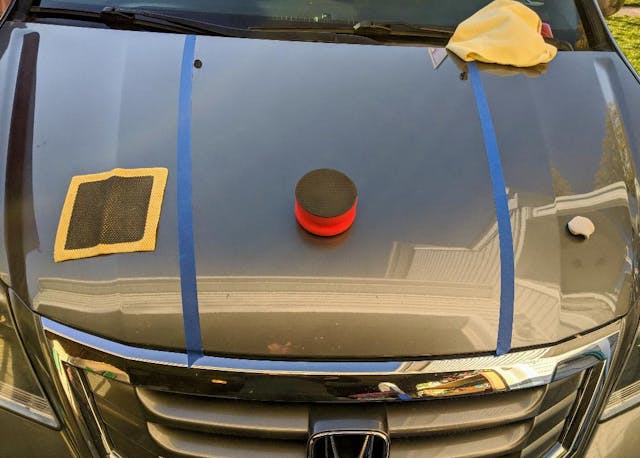





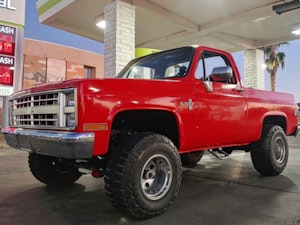


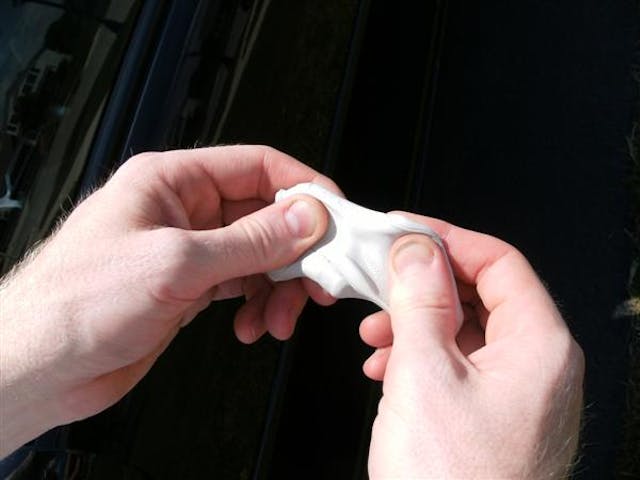




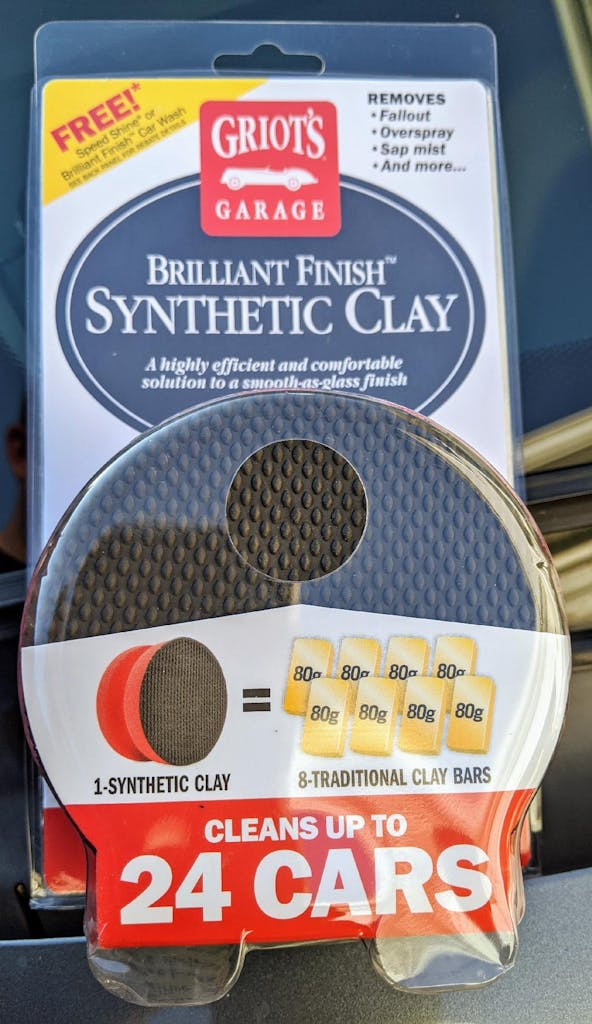
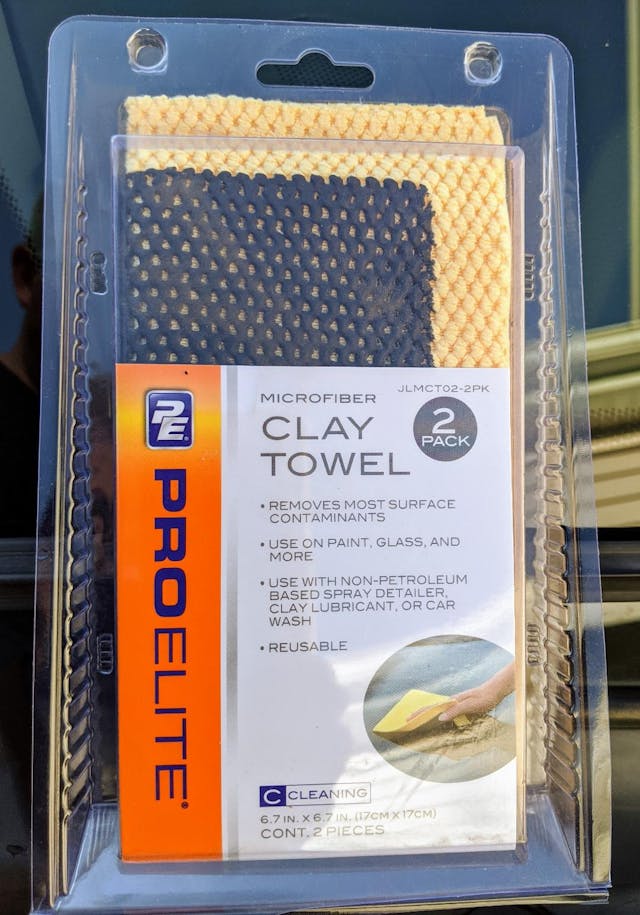


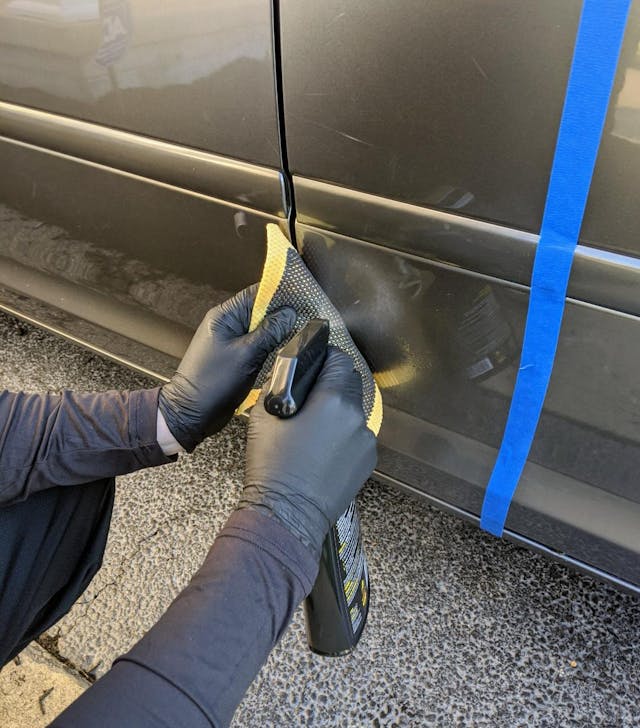
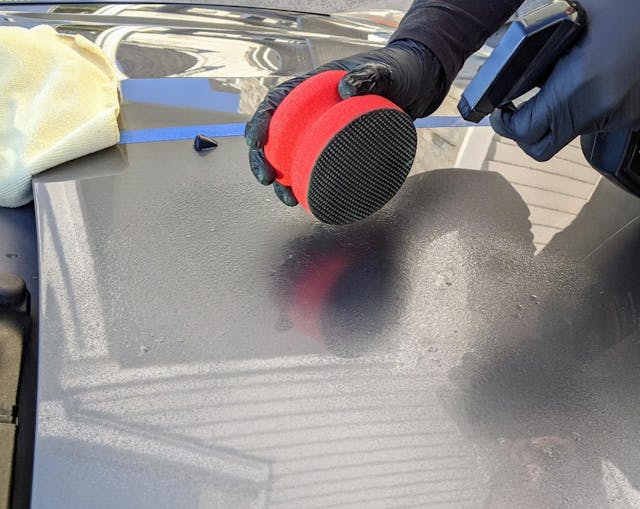
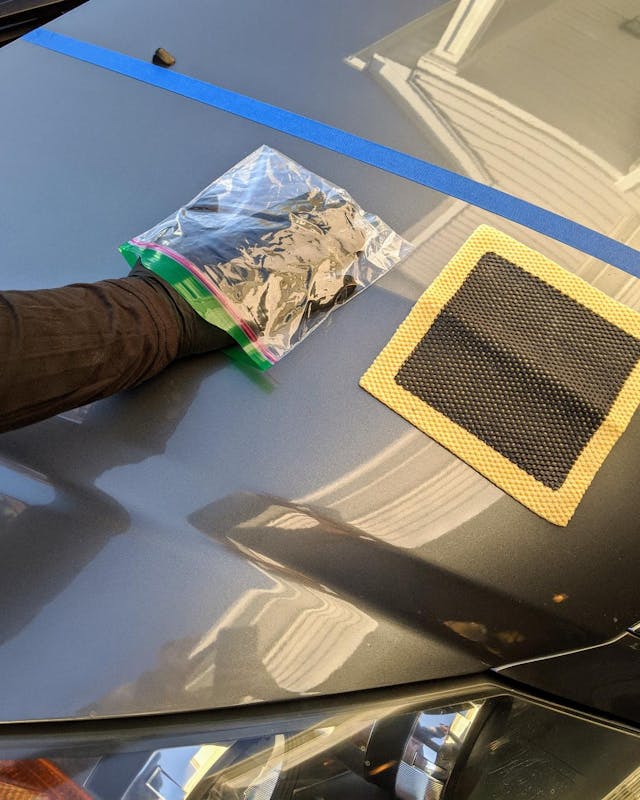
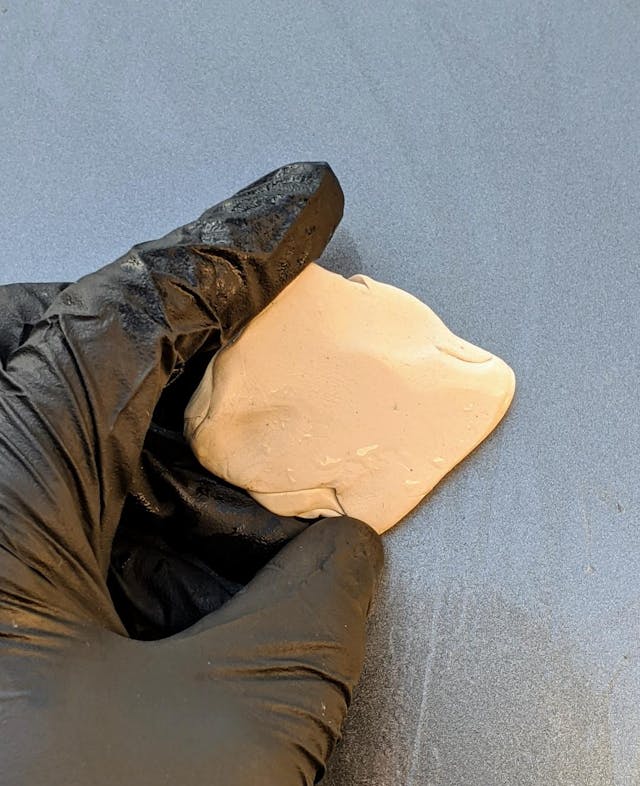
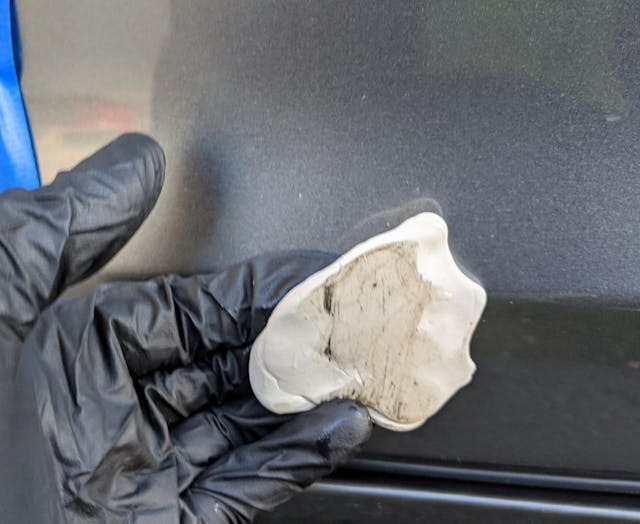
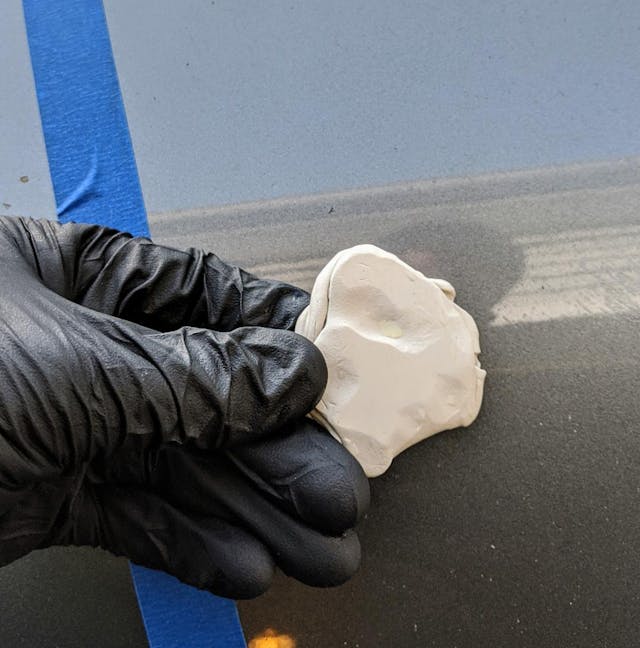
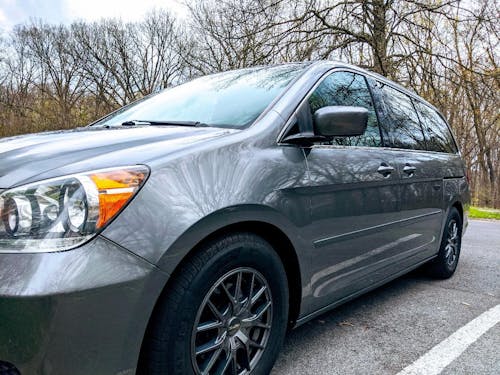










Thank you for the write up and taking the time and money to do your own experimenting. The information is very much appreciated!
Nice comparison and explanation.
Thank you. Definitely going to try the “newfangled” ones now.
Helpful & interesting article. Like the fact you name products in the comparisons.
The towel & pad surface (the cross hatch & rubber) look (at least on the monitor) similar to the non-slip silicone material I use to stop large items from sliding around in the car & on selves.
Would you please comment on that.
I used to purchase Zaino’s clay bar and it worked great. But lately I buy Griot’s products, and sprung for their synthetic clay. It works as described here. Also as stated, you can just toss it into your wash bucket and do each section as you wash. Goes a lot quicker!
Now, these are daily drivers, not some expensive show car. But I’d but them again.
Great an honest and straightforward review that cuts through embedded ideas! Will done and was an awesome idea to re-clay those panels to see what might or might not have been left behind.
Nice. My question: what happens to the presumably imbedded grit that is removed? If you can’t fold the clay to expose new surface, how are you not dragging “sand paper” across the car after a couple of panels?
I just learned about these today from a youtube video. Thanks so much for doing the test. Can’t wait to try the clay mitt on my cars while washing. That’s going to be such a time and effort saver.
I agree with you on the test, did the same thing. It was unreal how fast using the claymitt worked. It made doing the car in the fraction of the time it took with clay bars. Besides, you had to be so careful on the sides, as dropping a bar is very easy. I think the mitts are the way to go.